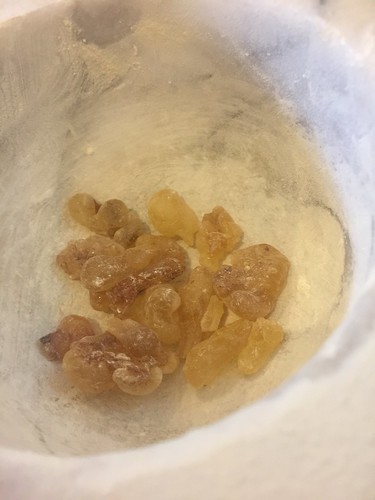Bois d'Encens

Frankincense essential oil only presents certain aspects of the resin, reminiscent of citrus zest (lemon, orange) and sharp turpentine qualities in various degrees of harshness, depending on the oil's quality. The dry down of frankincense oils is typically powdery and faint, leaving much to be desired in both longevity and the scent itself. All in all, frankincense distillations generally pale in comparison to the rich experience of smouldering resin smoke that Church-goers and incense addicts are so fond of.
The reason for all this is rather technical: frankincense resin (and resins in general) are made of essential oils, gum and resin. The gum is water soluble, often creating a plasticity (this is especially apparent in mastic, the resin from Pistachia lentiscus).
Bois d'Encens is one of the most realistic frankincense scents I've ever smelled, which, given the above factors, is not an easy feat. Rather than smelling like the oil, it brings to mind the burst of citrus and dust that occurs when you place a tear of frankincense on a hot charcoal, followed by an explosion of essential oils released in thick smoke. So far, this is the only Armani that ever spoke to me (the rest of the Armani Privé collection seemed mediocre, or at best pretentious - a trend that is sadly saturated the faux niche market from its very conception).

But, as common with modern niche fragrances, there is a culprit. And that shows itself in the dry down, which often with the incense genre falls into the disinfectant-soap basin, with musk molecules or iso-E-super that break down the illusion of authenticity. Thankfully with this number, it happens later into the game (then, in, say Kyoto by Commes de Garcons).

